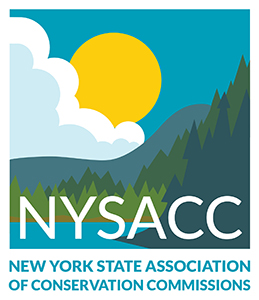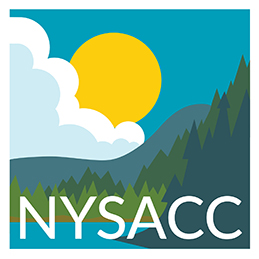Ask NYSACC

Question: Should my municipality enact a “temporary moratorium” on development to allow time for gathering enough information to address the impacts brought on by such new development?
Answer: In a very unscientific poll, NYSACC asked this question of CACs statewide and received a variety of responses. A common thread for enacting a temporary moratorium on development is that a municipality is currently reviewing and updating its Master Plan, and needs more time to consider any impact that development will create, or that a community needs to review its infrastructure to help manage what seems like overpowering development pressures. If your community is considering a building moratorium, why not contact one of the CACS listed in our answer for more details.
Here’s a sampling of the responses received:
1. The City of Rye in Westchester County (https://www.ryeny.gov/government/boards-and-commissions-community-volunteers/conservation-commission-advisory-council) enacted a 6-month temporary moratorium prohibiting the review, processing or approval of any new application related to a subdivision or re-subdivision of property, the development on steep slopes or the placement of a residential building with its front not oriented towards a front yard. The concern for this municipality was that their land use boards were having to deal with unusual configurations of properties within subdivisions, the maneuvering of lot lines and the creation of flag lots, approving lots with minimum street frontage which impact on neighborhood character, loss of open space, loss of trees, and the development of previously environmentally constrained properties (rock outcroppings, steep slopes, wetlands and/or high groundwater) that now could be developed using engineering technology (rock removal techniques and sump and sewer pumps). The municipality needed this moratorium to review its existing zoning and land use regulations permitting current land use, as it impacting their listed concerns above. It should be noted that this wasn’t a total moratorium, as it allowed certain applications to go forward, as long as they didn’t impact wetlands, watercourses, area variance, design review (they had an architectural review board), building permit, tree removal permit, sediment and erosion control permit, and blasting permit or rock removal permit within 20 feet of a steep slope (defined as a slope greater than 25%). There was also an appeals process based on unnecessary hardship, the project’s harmony (or lack thereof) with the existing character of the community as a whole, and whether the application is in compliance with all other municipal codes. An extension to the 6 months moratorium was left up to the municipal government for up to another 6 months.
2.The Town of Bethlehem in Albany County(https://www.townofbethlehem.org/682/Conservation-Easement-Review-Board)has currently enacted a temporary moratorium to provide time to enact their comprehensive plan.
3.The Town of Woodstock in Ulster County(https://townwoodstock.digitaltowpath.org:10111/content/Boards/View/2)has drafted a 9-month moratorium on the processing and approval of demolition permits for residential structures and applications for transient accommodation uses, short-term rentals and residential conversions so that the town can review a variety of housing options that have appeared since its last comprehensive plan.
4.The Town of Canandaigua in Ontario County http://www.townofcanandaigua.org/page.asp?id=204 did not support their CAC proposed resolution for a limited moratorium on development applications in a certain part of their community so they could update and codify their ridge line guidelines and their conservation subdivision policy.
5.In 2004, theTown of Eastchester in Westchester County(https://www.eastchester.org/government/eastchester_boards_and_services.php)adopted a local law establishing a 6-month moratorium within all of the community’s zoning districts to allow the town to evaluate and update its zoning laws in response to development pressure. It was extended another 6 months. Although the law referenced theComprehensive Plan, that was actually not updated.However, the Town did amend theZoning Law during the moratorium. Here’s an excerpt from the local law establishing the moratorium below:Presently, the Town of Eastchester continues to experience significant pressure to permit residential and commercial development within the Town. Additional development within theTown will, within all likelihood, further exacerbate and intensify the increased traffic congestion along the town’s major road and its major intersections, and the use of local streets as an alternative route to avoid that congestion. Additional development may also result in the degradation of the natural and historical features in the area, loss of natural trees, and other vegetation, loss of open space, wetlands, streams and other environmentally sensitive areas.If not restricted, pending the completion of these studies and the updating and/or revising of the comprehensive plan, further development within theTown could frustrate or undermine the intended purposes of, as well as the implementation of any solutions proposed by the studies and the comprehensive plan. Appropriate measures must be taken for an interim period to protect the public’s health, safety, welfare and general interest pending completion of these studies, comprehensive plan update and/or revisions and the subsequent enactment by the Town Board of appropriate legislation.As an update to their moratorium in 2004, a representative of their Planning Department stated recently:“Establishing the moratorium definitely gave us the ability to do the necessary research and make the necessary amendments to the Zoning Law in a timelier fashion, without being distracted by Planning and Zoning approvals and building permits, etc.”.
6. A moratorium is connected with the Basha Kill area in the Town of Mamkating in Sullivan County. The following is taken from the Basha Kill Area Association website (Classic – thebashakill): The Basha Kill Area Association was founded in 1972 motivated by the purchase of some 2,800 acres by the New York State Department of Environmental Conservation with a mission to protect the Basha Kill wetlands and surrounding area from ecological degradation, to promote education and respect for the environment in general and to preserve the beauty of the area. While seemingly a great idea at its inception, its creation was not universally accepted, as area residents who lived in the proposed preserve would be bought out by the state and have to relocate. In 1973, a two-year moratorium on the purchase was proposed to enable owners to research and pursue their rights and options. The members went door to door to solicit support. The moratorium idea, however, was rejected, and the state proceeded. It took until 1980 to complete the entire purchase. The wisdom of this purchase has been repeatedly acknowledged by the rejection of numerous large development applications proposed nearby. While contentious at its birth, today the preserve serves as a unique habitat for wildlife and anchors a pro-active community of environmentalists. In Buff McAllister’s fascinating history of the Basha Kill (written in 2012), it states at the very end: “ It has been forty years of serious purpose and an enormous amount of hard work by wonderful, strong, resourceful people who understand that we have to win every battle to protect the Basha Kill. These years have been filled with anxiety and tension and frustration at fighting the same battles again and again. But they have also been filled with friendship, camaraderie and support from like-minded people; the pleasure of seeing children catch the environmental “bug;” and the magic of this extraordinary place in nature. Here’s to the next 40!”

7. In 2017, citing concern for water usage with big increases is new residential building, the City of Beacon in Dutchess County (https://www.cityofbeacon.org/index.php/government/boards-committees/Conservation-Advisory-Committee/) voted in a temporary six-month moratorium on residential development to pause new proposals as it reviewed current water supply plans. In 2019, the City Council had discussed a 2nd temporary moratorium to reflect upon current water usage and sources. In 2019, Beacon was in a Stage 1 Drought. The city again considered in February, 2020, a moratorium on large construction projects due to their continuing concerns about maintaining clean drinking water to support population increases, even with having multiple water sources to draw from.
8.In late 2019and early 2020, the Town of Lloyd in Ulster County (https://www.townoflloyd.com/environmental-conservation-council) adopted a limited, temporary moratorium in response to concerns about traffic and density of development along theRoute 9 commercial corridor. The review of the comprehensive plan and zoning that occurred at that time involved allowed densities and setbacks.
9.The Town of Stanford in Dutchess County (http://www.townofstanford.org/conservation-advisory-commission/) did not enact a temporary building moratorium when updating their comprehensive plan for two reasons: (a) The most recent Comprehensive Plan Committee has been meeting for more than a year to finalize a draft for approval by theTown Board. Prior to that the plan was years in the making; and (b) there hasn’t been a ton of development pressure here.
10.The Town of Kent in Putnam County (http://www.townofkentny.gov/CAC/cac_default.html) did implement a 6-month moratorium regarding soil excavation and removal in order to provide time to update the town code to incorporate new land use zoning around regulated mining, where any removal of material beyond a certain amount becomes a regulated activity, managed by the NYS DEC.While the NYS DEC regulates mining activity and all pollution and environmental controls around the mining activity and land reclamation at the end of the mining project, what Kent discovered in 2019 is that many municipalities do NOT have any land use ordinances specifically around mining.Such land use ordinance is allowable and this helps the town coordinate large excavation projects by instructing how and where mining as a large excavation project and regulated activity fits into the land use characteristics of the municipality. Each municipality is different.Some municipalities invite commercial, large-scale mining as an activity for the revenue such activity generates, other, usually, suburban and urban communities, have very tightly regulated land use ordinances around where mining fits into the municipality. The initial 6-month moratorium came and went in the first 6months of 2020 with nothing accomplished due to all of the confusion and lock downs around COVID19.The moratorium was extended an additional 6 months, with the same net result.A 3rd6-month extension is currently in effect and now the town board is actively working with consultants and the different town boards (planning, zoning and Kent’s CAC) to create updated zoning that includes land use of mining.In Kent’s opinion, municipal use of a moratorium is an effective use of municipal controls to allow time to deal with updates to zoning and other aspects which define the characteristics of the municipality.




You must be logged in to post a comment.